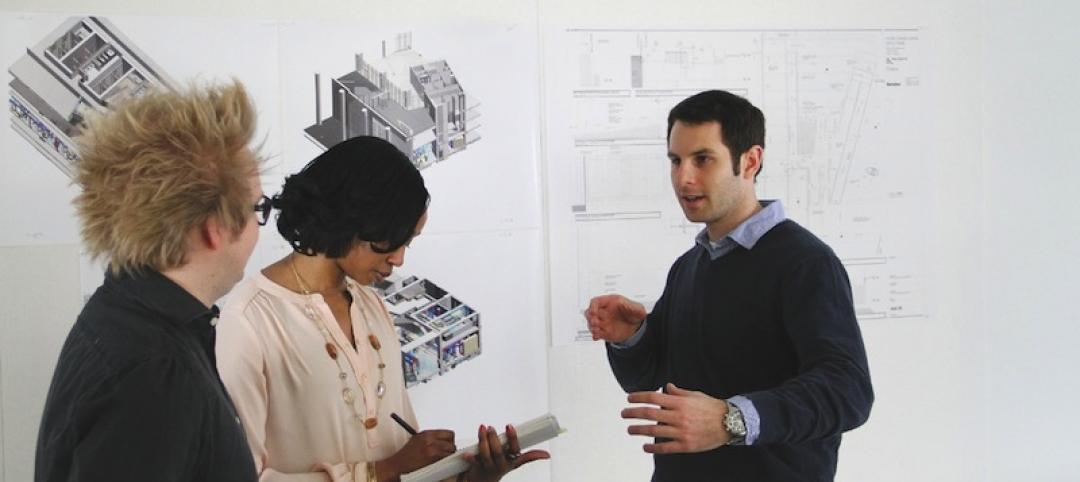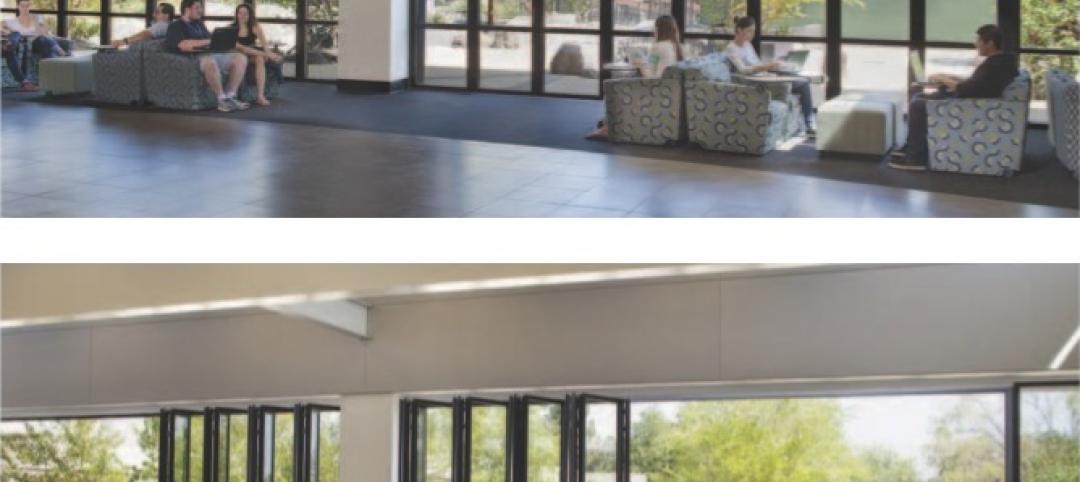 |
14. Mod Pod A Nod to Flex Biz
Designed by the British firm Tate + Hindle, the OfficePOD is a flexible office space that can be installed, well, just about anywhere, indoors or out. The self-contained modular units measure about seven feet square and are designed to serve as dedicated space for employees who work from home or other remote locations. Construction of the modular pods includes natural, recycled, and recyclable materials, as well as insulation and a high-efficiency HVAC system. The pods are plug-in powered; the fully wired units connect to an existing structure (home, garage, office building, um...Starbucks?) while IT and phone connectivity is wireless, but can also be cabled in. Delivery takes approximately 12 weeks. |
15. Transform any Work Surface into A Charging Station
 |
16. Concrete Slabs Plays up Rubber Ball Technology
17. Brown Rice for Greener Concrete
While slag from steel mills, fly ash, and silica fume are being added to concrete to reduce the material's greenhouse gas emissions and make it stronger and more resistant to corrosion, rice husks (the small cases around edible rice kernels) have so far proved an unsuitable additive because when burned, its ash is too contaminated with carbon. However, scientists were focused on finding ways to utilize rice husks because they are very rich in silicon dioxide, a core concrete ingredient. A breakthrough has come from researchers at Plano, Texas-based ChK Group, who discovered that superheating the husks to almost 1500 °F in an oxygen-free furnace produces pure, nearly carbon-free silica. ChK researchers, who are still refining their production processes, speculate a single full-size furnace could produce 15,000 tons of rice husk ash annually, which can be used to replace up to 20% of cement used in concrete production. |
18. Killer Beetles Lead to Concrete Plywood
The mountain pine beetle is devastating British Columbia's conifer forests, and while some researchers focused on controlling the destruction, others focused on salvaging the billions of dead trees. The University of Northern British Columbia's professor Ron Thring and graduate student Sorin Pasca focused on salvaging efforts and discovered that dead wood from lodgepole pine trees is an excellent ingredient for cement production. While cement typically repels organic material, the beetles "enhanced" the wood in such a way that it sticks to cement and act as a substitute for typical aggregates like stones and rocks. Researchers say the concrete plywood hybrid board (above), which they call MPB (for mountain pine beetle), is water resistant and can be used in place of drywall and gypsum board or as flooring and countertop surfacing. Boards can be cut with regular woodworking tools and nailed without pre-drilling.
Related Stories
| Apr 15, 2013
Using software and the power of the cloud to connect your back office to your field operations [webinar]
This webinar will focus on a new software subscription service that will help construction companies, general and specialty contractors connect their back office infrastructure with all of their field operations. The service will help capture, manage and report on the progress of existing construction jobs and help in the planning of new ones.
| Apr 8, 2013
Most daylight harvesting schemes fall short of performance goals, says study
Analysis of daylighting control systems in 20 office and public spaces shows that while the automatic daylighting harvesting schemes are helping to reduce lighting energy, most are not achieving optimal performance, according to a new study by the Energy Center of Wisconsin.
| Apr 5, 2013
'My BIM journey' – 6 lessons from a BIM/VDC expert
Gensler's Jared Krieger offers important tips and advice for managing complex BIM/VDC-driven projects.
| Apr 3, 2013
5 award-winning modular buildings
The Modular Building Institute recently revealed the winners of its annual Awards of Distinction contest. There were 42 winners in all across six categories. Here are five projects that caught our eye.
| Mar 27, 2013
Small but mighty: Berkeley public library’s net-zero gem
The Building Team for Berkeley, Calif.’s new 9,500-sf West Branch library aims to achieve net-zero—and possibly net-positive—energy performance with the help of clever passive design techniques.
| Mar 26, 2013
Will Google Glass revolutionize the construction process?
An Australian architect is exploring the benefits of augmented reality in the design and construction process.
| Mar 24, 2013
World's tallest data center opens in New York
Sabey Data Center Properties last week celebrated the completion of the first phase of an adaptive reuse project that will transform the 32-story Verizon Building in Manhattan into a data center facility. When the project is completed, it will be the world's tallest data center.
| Mar 20, 2013
Folding glass walls revitalize student center
Single-glazed storefronts in the student center at California’s West Valley College were replaced with aluminum-framed, thermally broken windows from NanaWall in a bronze finish that emulates the look of the original building.
















